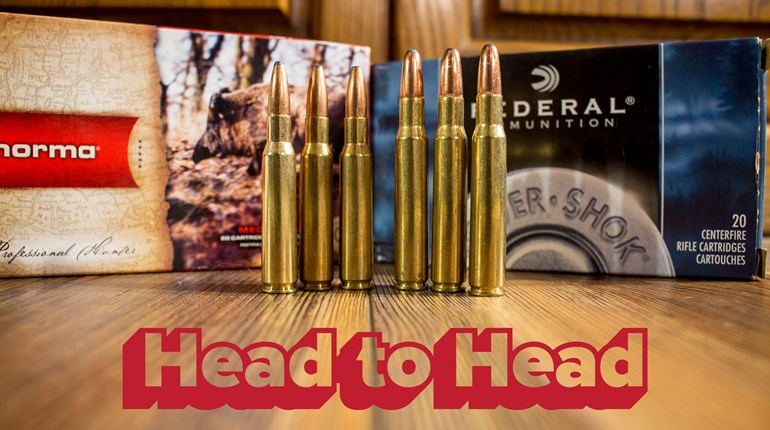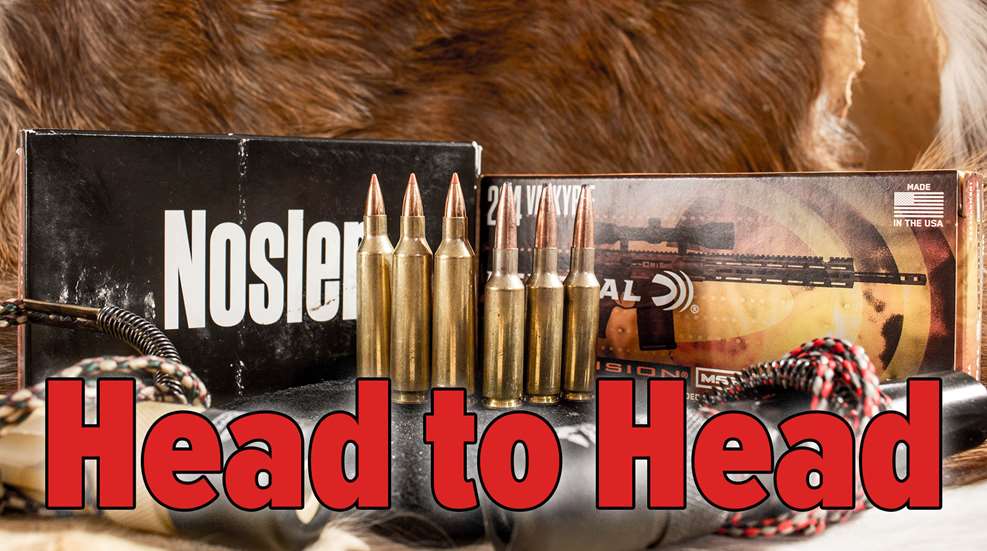
Sitting at the shooting bench at the SHOT Show’s Industry Day at the Range, it was my turn to unleash the then-new .224 Valkyrie. The steel plate was 925 yards downrange, and I did my best to keep my skepticism to myself. In all fairness, that’s quite a poke for any .22-caliber bullet, but my mind was put to rest as I watched that heavy-for-caliber bullet rip air and smash the plate four inches left of center. The second shot was within a hand’s width of the first, and I was made a believer immediately. Other writers shared the same experience, despite the changing Nevada winds, and we came away with faith in the new cartridge from Federal.
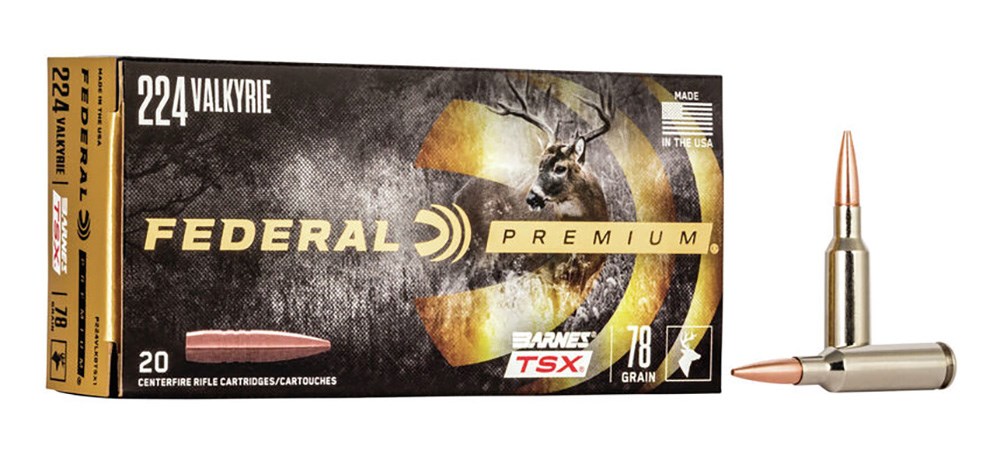
Here in New York, my go-to rifle for coyotes, foxes, woodchucks and similar game has been a Ruger Model 77 MKII in .22-250 Remington, as it will put three 53-grain Sierra MatchKing bullets in a ⅜-inch group at 100 paces, and the terminal performance has always been devastating. Where I hunt, a 300-yard shot just about the longest I can get, so the long-range capabilities of the cartridge aren’t an issue. And because it has been around as a wildcat for over 80 years, and legitimized by Remington in 1965, the .22-250 Remington is one of those classic cartridges that so many hunters have come to love. It has been used for all sorts of varmints, predators and furbearers, but some have asked, has the Valkyrie come along to take its place?
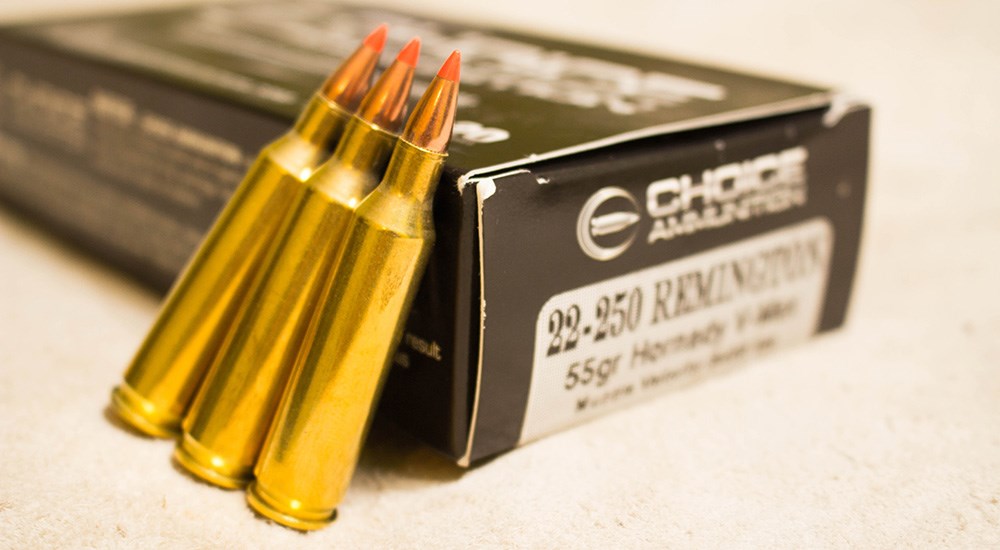
Looking at the older design first, the .22-250 Remington is the .250-3000 Savage cartridge, necked down to hold .224-inch-diameter bullets. It is a rimless cartridge, with a 28-degree shoulder, 0.473-inch case head diameter, a case length of 1.912 inches, and a cartridge overall length of 2.350 inches. Equipped with either a 1:12 or 1:14-inch-twist, it will stabilize bullets of 55 grains or lighter, and some of the 60-grain bullets will work, depending on the conformation. It has plenty of case capacity, and has produced velocities in excess of 4400 fps with lighter bullets. In addition, it has a well-earned reputation for hair-splitting accuracy, and it has been a favorite of benchrest shooters. There are some hunters who prefer the light recoil of the .22-250 and use it as a cartridge for deer, antelope and similar game animals, though I personally believe there are better choices for the job. Nonetheless, the .22-250 Remington is a sound design, though—as we shall shortly see—that twist rate can pose an issue.

Based on the 6.8 Remington SPC case (itself based upon a necked down .30 Remington) necked down to hold .224-inch-caliber bullets, the .224 Valkyrie has the same .422-inch case head as its family, a case length of 1.600 inches, and a maximum cartridge overall length of 2.260 inches. Designed to fit in the AR-15 receiver, the Valkyrie is one of the ‘revisionist’ cartridges, concentrating on using a long, heavy-for-caliber bullet with a sleek ogive, rather than case capacity. Like the .22-250, the Valkyrie is a rimless design, using its 30-degree shoulder for headspacing. Though the Valkyrie’s case is shorter than that of the .223 Remington, the former can use the longest and heaviest of bullets within the bore diameter. Driving a 90-grain bullet to a muzzle velocity of 2700 fps, the Valkyrie is more about Ballistic Coefficient than it is about speed. Looking at the velocity potential of the case—at least in comparison to the .22-250 Remington—the Valkyrie doesn’t really impress, but the performance of those high-BC bullets at longer ranges make up for all of that.

To give an honest comparison of the two cartridges, I will split them by one feature: bullet weight. If you are the hunter or shooter who spends his or her time inside of 300 or 400 yards, I think the .22-250 Remington will check all the boxes for you, at least for the pursuit of varmints, predators and furbearers. Should you be absolutely dead set on using a .22-caliber centerfire as a deer rifle, I would certainly feel that the .224 Valkyrie and its ability to use the heavier bullets should get the nod, as a 90-grain Federal Fusion is certainly a better choice than a 55-grain Fusion delivered from the .22-250 Remington, despite the differences in velocity.
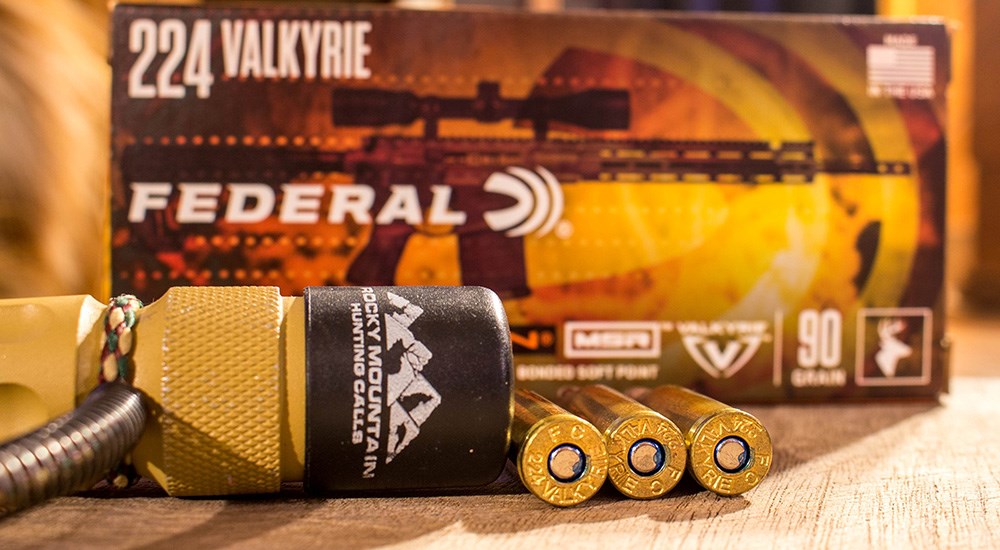
Both cartridges have a wide selection of ammunition, featuring a variety of projectiles suitable for target shooting, hunting varmints and predators, as well as big game up to deer-sized animals. The .22-250 Remington has the lighter bullets—like the 43-grain Speer TNT Green at 4000 fps or the 40-grain Hornady V-Max at 4200 fps—which can certainly create the famous red mist, yet is offered with the 55-grain Fusion and 60-grain Nosler Partition for the larger species. Because of the slower twist rate, this is where the .22-250 tops off. The .224 Valkyrie takes off where the .22-250 stops, with the Federal loads featuring the 60-grain Hornady V-Max and Nosler Ballistic Tip Varmint for the smaller critters—both at 3300 fps—and the 78-grain Barnes TSX and 90-grain Fusion for larger species, at 2850 and 2700 fps respectively. The 90-grain load will deliver over 1,000 ft.-lbs. on energy out to 200 yards and over 700 ft-lbs at 400 yards, with a trajectory very similar to the .30-’06 Springfield with a 180-grain bullet. Compare this to the .22-250 with the 55-grain Fusion and you'll see lower energy figures, yet a flatter trajectory.
If you subscribe to the 1,000 ft.-lb. minimum—and I have no idea where that figure ever originated—you’ll see that 55-grain load slip under that bar at about 150 yards. It will retain 869 ft.-lbs. at 200 yards and 442 ft.-lbs. at 400 yards, though it drops only 6 inches at 300 yards and 18.8 inches at 400 yards, when sighted with a 200-yard zero. Despite the additional velocity, the .22-250 will drift further in the wind than will the Valkyrie with its heaviest bullet.
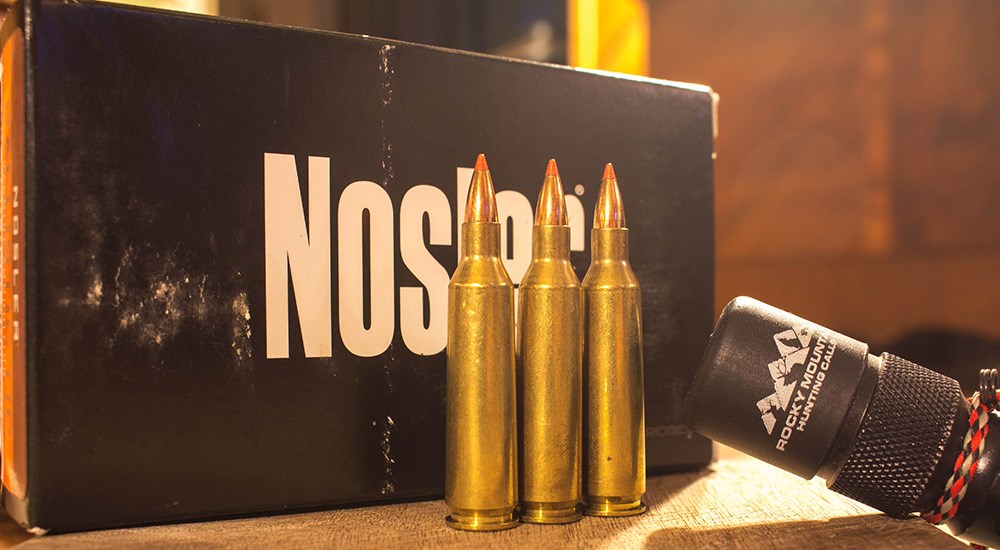
So, the application will determine the winner in this particular instance. If I wanted one gun for coyotes/deer/long range target shooting, the Valkyrie would be the way to go. But because I have a significant number of big game rifles ranging from the 6.5s all the way through the .30s and up to the .40s, hunting deer with a .22 centerfire just doesn’t fit my agenda. And because of the ranges at which I shoot when hunting predators and varmints, my battered .22-250 Remington handles my hunting needs just perfectly. Most of the rifles chambered for the Valkyrie tend to be chambered in either autoloading MSRs or bolt-action chassis guns, while the .22-250s tend to be manufactured in a more traditional style hunting rifle. All styles are effective, so that too will be a personal choice. With each having its particular strengths, I will call this a draw, based on the user’s chosen application. But I’m not replacing my .22-250 any time soon.
Looking for previous installments of our "Head to Head" series? We've got you covered.
• 9.3x62mm Mauser vs. .375 H&H Magnum
• .348 Winchester vs. .358 Winchester
• .35 Whelen vs. .375 H&H Magnum
• 7mm PRC vs. 7mm Remington Magnum
• 6.8 Western vs. .270 Winchester
• .218 Hornet vs. .218 Bee
• .338-06 A-Square vs. .35 Whelen
• .308 Winchester vs. .300 Winchester Magnum
• 6.5 Creedmoor vs. 6.5 PRC
• .22 LR vs. .22 WMR
• .30-06 Springfield vs. .300 Winchester Magnum
• .300 Wby. Mag. vs. 8mm Rem. Mag.
• 7mm Remington Magnum vs. 27 Nosler
• .257 Roberts vs. .25-06 Remington
• .300 H&H Magnum vs. .300 Winchester Magnum
• .308 Winchester vs. .338 Federal
• .222 Remington vs. .223 Remington
• .270 WSM vs. 7mm Rem. Mag.
• .22-250 Remington vs. .204 Ruger
• .25-06 Remington vs. 6.5 Creedmoor
• .444 Marlin vs. .45-70 Government
• 7x57mm Mauser vs. .280 Remington
• .300 Win. Mag. vs. .300 Wby. Mag.
• .375 Ruger vs. .375 H&H Magnum
• 7mm-08 Remington vs. .280 Remington
• .280 Remington vs. .280 Ackley Improved
• 7mm vs. .30 Caliber
• 6.5 Weatherby RPM vs. 6.5 PRC
• .338 Win. Mag. vs. .340 Wby. Mag.
• .300 RSAUM vs. .300 WSM
• .500 Jeffrey vs. .505 Gibbs
• 7mm RUM vs. .300 RUM
• .308 Winchester vs. 7mm-08 Remington
• 6.5 Creedmoor vs. .260 Remington
• .303 British vs. 8x57 Mauser
• .30-06 Springfield vs. All Other .30s
• .17 HMR vs. .17 WSM
• .450 Nitro Express vs. .470 Nitro Express
• 350 Legend vs. .35 Remington
• .280 Ackley Improved vs. 7mm Rem. Mag.
• .404 Jeffery vs. .416 Rigby
• .243 Winchester vs. 6mm Creedmoor
• .300 PRC vs. .300 Win. Mag.
• .30-06 Springfield vs. .270 Winchester
• 6.5 Creedmoor vs. 7mm-08 Remington
• 8x57 Mauser vs. .318 Westley Richards
• .358 Winchester vs. .350 Remington Magnum
• .22-250 Remington vs. .220 Swift
• .270 Winchester vs. .270 WSM
• .26 Nosler vs. 6.5-300 Weatherby Magnum
• .458 Win. Mag. vs. .458 Lott
• 7mm Rem. Mag. vs. .300 Win. Mag.
• .243 Winchester vs. 6mm Remington
• 7x57mm Mauser vs. 7mm-08 Remington
• .25-06 Remington vs. .257 Weatherby Magnum
• .338 Winchester vs. .375 H&H Magnum
• .30-30 Winchester vs. .35 Remington
• .257 Roberts vs. .250-3000 Savage
• .270 Winchester vs. .280 Remington
• .35 Whelen vs. 9.3x62mm Mauser
• .416 Rigby vs. .416 Remington Magnum
• .308 Winchester vs. .30-06 Springfield
• .22 Nosler vs. .224 Valkyrie
• .300 Win. Mag. vs. .300 WSM
• .223 Remington vs. .22-250 Remington













